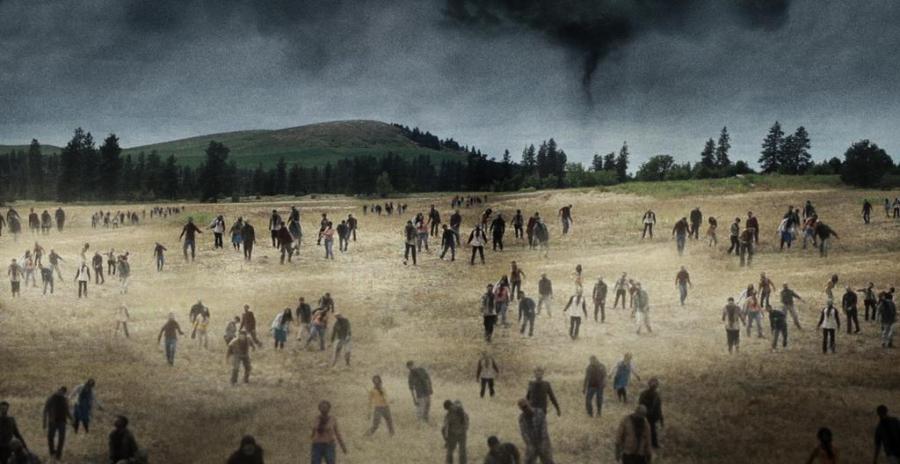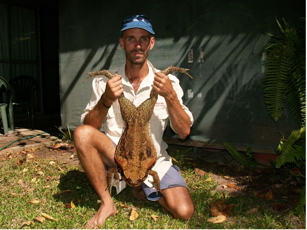I recently watched an episode of the Syfy Channel’s post-apocalyptic zombie show Z-Nation. The human survivors were making their way across the U.S. Midwest when a massive tornado spun up, picking up zombies and flinging them all over the place.
“Is that what I think it is?” asks one character, observing the oncoming cyclone of the undead. “It ain’t sharks,” says his companion. This is, of course, a reference to the infamous “Sharknado” movie in which a tornado at sea (technically a waterspout, I reckon) sucks up a bunch of sharks and blows them into Los Angeles. Sharknado is, by all accounts, a thoroughly ridiculous movie with no scientific validity.

The tornado in the background is just about to suck up these flesh-eating freaks from beyond the grave to form an un-deadly Z-nado!

This movie poster tells you all you need to know.
But . . . biogeographers have shown that long-distance dispersal of species does occur due to storms! Rapid, long-distance movement (geographic range expansion) is called jump dispersal. A classic example involving storms is the cattle egret. Native to Africa, the birds were essentially blown across the Atlantic to the Americas by a tropical cyclone (this example is covered in many biogeography textbooks). Other studies show jump dispersal of lizards by hurricanes. A recent article by Monzón-Argüello and company (2012) demonstrates storm-driven jump dispersal for sea turtles. From their abstract: “As such, storms may be a route by which unexpected areas are encountered by juveniles which may in turn shape adult migrations. Increased stormy weather predicted under climate change scenarios suggests an increasing role of storms in dispersal of sea turtles and other marine groups with life-stages near the ocean surface.”
So, get ready for the possibility of more jump dispersals! There is no reason the phenomenon should be limited to marine life, however—wind-dispersed seeds, for instance, could be subject to storm-driven range expansion.
Which brings me to my idea for a script, in the spirit of Sharknado. I call it “Hurri-cane Toads.” A tropical cyclone whips across northern Australia, sucking up millions of invasive cane toads—huge, ravenous, poisonous amphibians—and dumps them on the unsuspecting citizens of, say, Brisbane or Sydney.

Cane toads (above) + hurricane = Hurri-cane Toads = hit movie?
----------------------------------------------------------
Monzón-Argüello, C. & 8 others, 2012. Lost at sea: genetic, oceanographic and meteorological evidence for storm-forced dispersal. Journal of the Royal Society Interface, doi: 10.1098/ rsif.2011.0788.
